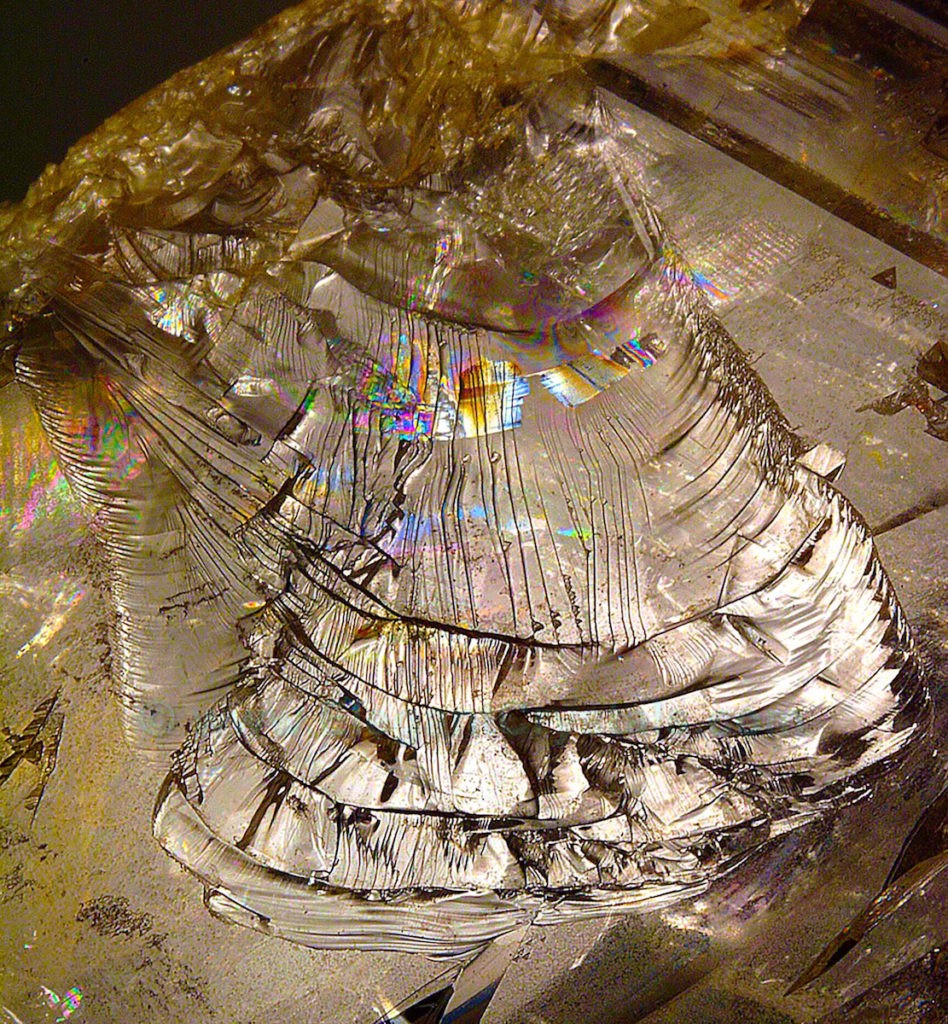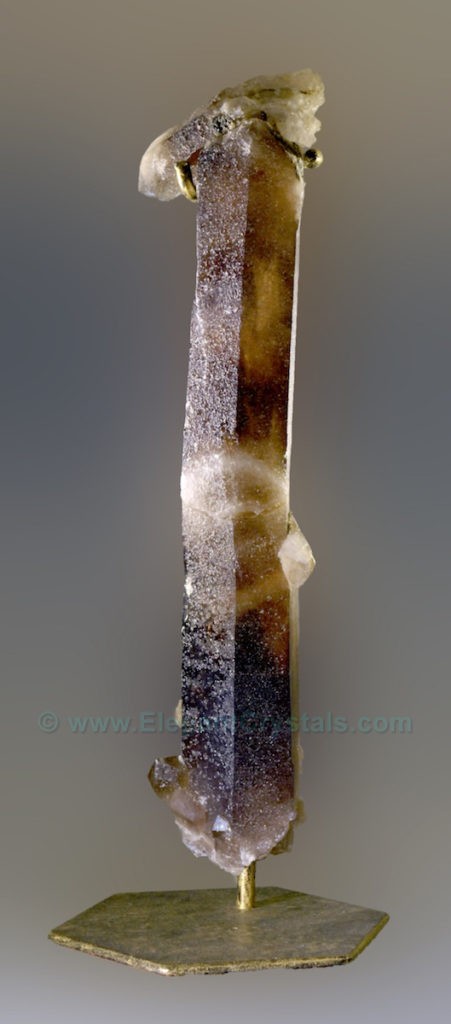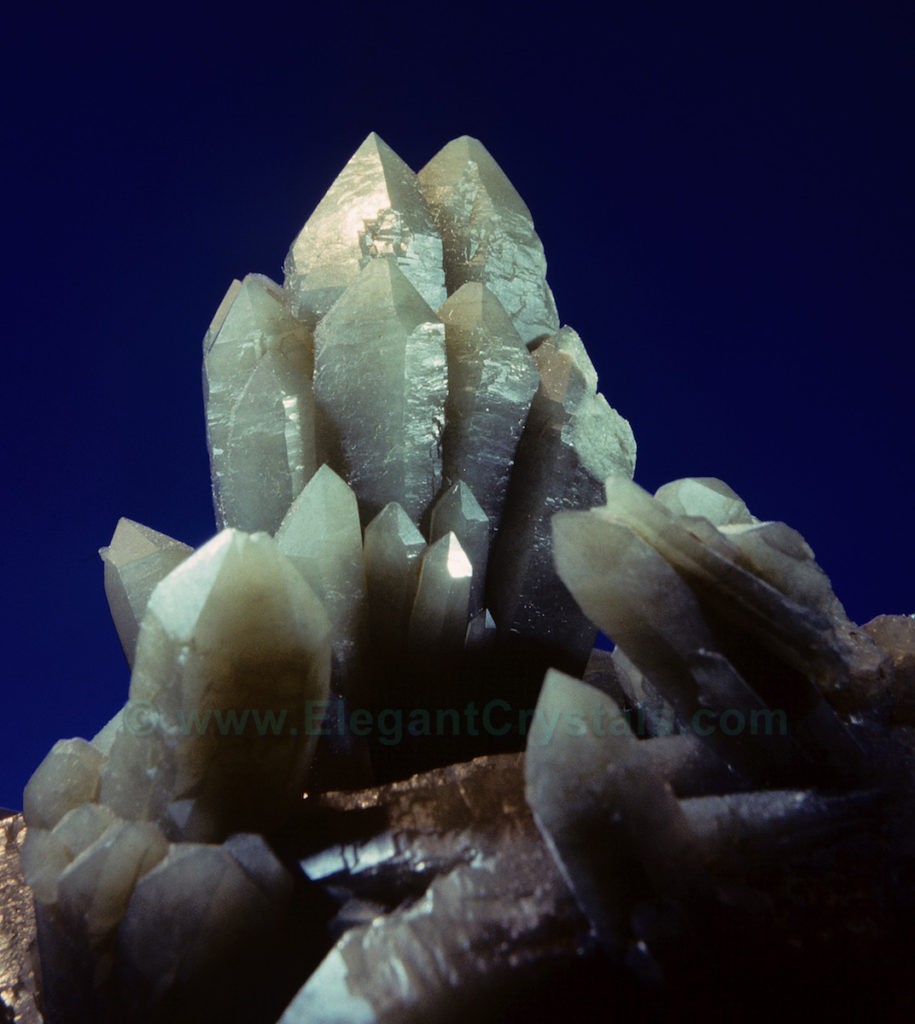CHAPTER 11
SELF-HEALED CRYSTALS

Picture #78
Brazilian Smoky Citrine with Iris Rainbows
Under a Re-healed Facet
This special image shows an extreme close-up of an unusual phenomenon taking place on the surface of this elestial (Jacaré) crystal.
You can see where the crystal broke many millions of years ago, and then slowly began to regenerate itself.
This is called a “self-healed” or re-healed facet.
Just under the facet there is a little rainbow lying parallel to the face.
It probably appeared when the crystal broke, which created a gap inside the crystal.
When I light up the front face, the rainbow also glows because it is on the same angle as the front surface.
In essence, I am using the front face as a mirror.
The rainbow becomes a parallel mirror behind it creating colors instead of just white light.
When quartz crystals break, they seldom fracture in straight lines or flat planes.
Instead of breaking along a flat edge, quartz breaks in concentric spirals.
This is due to the spiraling nature of the atomic structure in all quartz.
The cleavage in quartz is called “conchoidal breakage.”
(Pronounced kon KOY dull, and named after the conch shell.)
Crystals can break when subjected to shocks or extreme temperature changes.
Watch out for the broken edges because they are razor sharp.
The breakage usually follows the length of the crystal, called the C-axis.

Picture #79
7-inch-long Broken Arkansas Shard with Re-healed Bottom and Back
Some crystals broke millions of years ago while their neighbors were still growing in the ground.
Earthquake shocks, ground movements, or the effects of gravity on heavy crystals typically cause breakage.
Crystals can also grow into one another in a confined space with enough force to shatter.
Whatever the cause of breakage, if the crystal pocket, cavity (vug) or cave is still in an active growth phase, new crystallization may form over the broken surface.
The result may wind up looking like an elestial.
Early re-heals generally have a frosty look, while more advanced ones are very shiny.
If the re-healing proceeds far enough, it may even “glue” the broken pieces back together.

Picture #80
12-inch-tall Re-healed Smoky Quartz
From the Hallelujah Junction Mine, Nevada
This 12-inch long smoky citrine was found at Hallelujah Junction, Nevada.
It broke into three pieces, and then fused back together.
I particularly like the way the tip fell sideways and grew back onto the shaft.
Now it has a natural tomahawk shape.

Picture #81
3-inch-tall Twinned Quartz
with Green Hedenbergite from Greece
Twinned crystals can create many extra points, as re-heals can also do.
The growth mechanisms are different, yet we wind up with parallel points in both cases.
Crystal castle twins are my favorite forms of quartz crystals.
My interests have ranged from one type of crystal shape to another over the years.
I periodically go back and review crystals that I have not studied for a while.
I often find features I missed on my earlier photographic expedition.
It is like watching a favorite old movie and discovering something new to enjoy.
The green crystal above is quartz with microscopic mineral fibers inside.
It comes from Greece and is a rare parallel treasure.
Most of the crystals found in Serifos, Greece look like green flowers with petals sticking out in every direction.
This particular one has a nearly parallel arrangement
making it one of the few green castles I have ever found.
